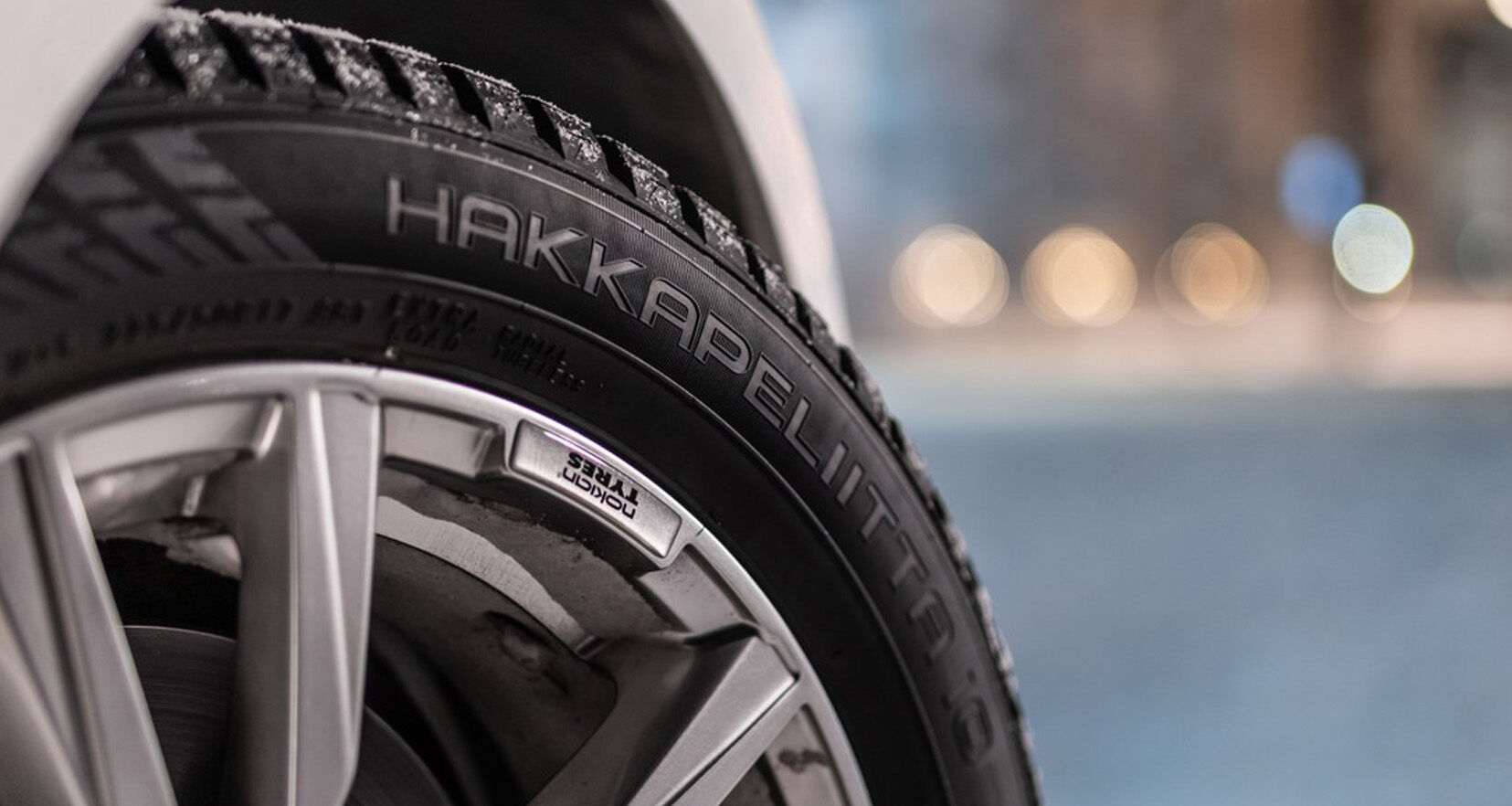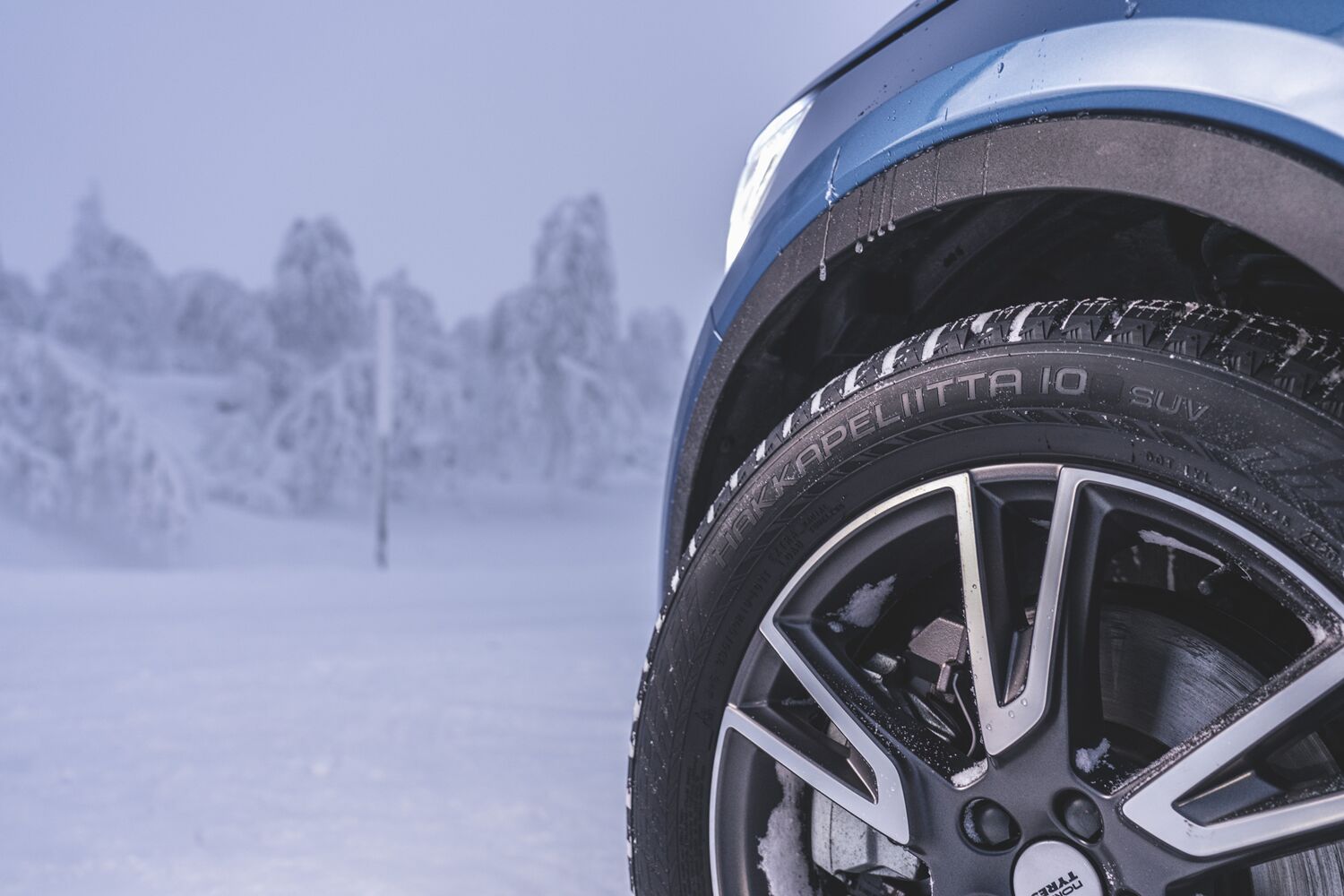
Knowing what the different markings on a tire mean empowers you to choose the right tires for your car. Here’s how to read tires and unlock the essential information that goes beyond tire size.
Your car tires come with a wealth of data stamped on the sidewall that is invaluable for every driver. Whether you’re determining the tire size, its production date, or its capability in winter conditions, learning how to read tires is key. This guide not only explains tire size details but also highlights additional markings—such as manufacture date, 3PMSF, M+S, and UTQG—that help you make more informed tire choices.
Visit your local Nokian Tyres dealer for expert advice in selecting the right tires for your vehicle.
Tire size
Tire size is often the most recognizable element when learning how to read tires. The tire’s sidewall is marked with a string of characters—for example, “205/55 R 16 94 V XL”—that reveals critical performance details:
-
205 indicates the tire’s width in millimeters measured from sidewall to sidewall.
-
The subsequent number (55) is the aspect ratio, representing the tire’s sidewall height as a percentage of its width.
-
The next number, 16, signifies the rim diameter in inches which must be matched with your vehicle’s rims.
-
Letters such as “R” indicate radial construction.
-
The number 94 and letter V denote the load index and speed rating.
-
Finally, the XL marking informs you that the tire is reinforced for higher load capacity.
Understanding this complete tire size information is a vital part of knowing how to read tires, ensuring you select a tire that meets both performance and safety requirements.

Manufacture date
Beyond size, knowing how to read tires includes checking the tire manufacture date. The last four digits of the Department of Transportation (DOT) tire identification number provide this information. For example, a code like “1223” means the tire was manufactured in the 12th week of 2023. Often, this code appears on only one side of the tire—be sure to check the inner sidewall or the opposite side of the vehicle if it’s not immediately visible.
Identifying a tire’s manufacture date is important since the age of a tire is useful in determining if it has reached its maximum service life. Tires should generally be replaced after 6 years in service, or 10 years from the date of manufacture, whichever comes first. Bear in mind that factors like storage conditions, tire pressure, and mileage can accelerate tire aging and cause them to wear out faster. This insight is a key component of how to read tires thoroughly.
3PMSF and M+S markings
Learning how to read tires also means understanding the markings that indicate performance under different weather conditions. Two important symbols to look for are:
Three-Peak Mountain Snowflake (3PMSF)
The first of the two is the Three-Peak Mountain Snowflake (3PMSF) marking. Tires stamped with the 3PMSF symbol are engineered for severe winter conditions. They deliver superior traction and handling on snow and ice, making them an excellent choice for winter driving.

Mud and Snow (M+S)
For less extreme conditions, the M+S marking indicates enhanced performance on mud and light snow. While M+S tires offer improved grip over standard all-season or summer tires, they do not match the winter performance of a tire featuring the 3PMSF symbol.
Knowing how to read tires involves recognizing these symbols so you can confidently select tires that are suitable for your driving conditions. Always consult local winter driving regulations to ensure you use the correct tire type for safety and performance.
Uniform Tire Quality Grading (UTQG)
The final piece of critical information when learning how to read tires is the Uniform Tire Quality Grading (UTQG) system. This standardized rating, used predominantly in the United States, provides a comparison of a tire’s overall quality. UTQG is broken down into three parts, each of which is indicated on the tire sidewall:
-
Treadwear: This grade measures the tire’s expected durability relative to other tires from the same manufacturer. A higher treadwear number suggests a longer-lasting tire.
-
Traction: Expressed by ratings such as AA, A, B, or C, this grading reflects the tire’s ability to stop on wet surfaces, ensuring safe handling.
-
Temperature: This rating evaluates the tire’s capacity to withstand and dissipate heat, which is crucial for maintaining performance during high-speed or prolonged drives.
By understanding the UTQG ratings, you gain deeper insights into how these tires will perform over time under various conditions—a definitive factor when how to read tires for optimal safety and efficiency.
Do you need to find a local tire shop near you? You can use our Nokian Tyres dealer locator to find one:
Please remember that it is the driver’s responsibility to ensure their tires are safe and suitable for their vehicle and to follow the vehicle’s manufacturer´s guidelines for proper use and maintenance. Consult your closest Nokian Tyres dealer or your vehicle’s manufacturer for specific advice.


